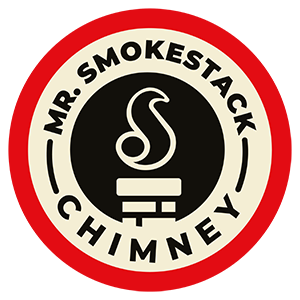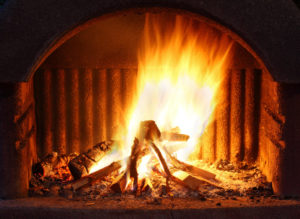When animals take up residence in your chimney, it can be a dangerous situation – both for the animals and for your family and home!
 Here at Mr. Smokestack, we’ve seen firsthand how various critters can damage your chimney system, trigger foul odors, and create some serious hazards for you and your family members. Which is why we specialize in removal services, as well as sweeping and repair services.
Here at Mr. Smokestack, we’ve seen firsthand how various critters can damage your chimney system, trigger foul odors, and create some serious hazards for you and your family members. Which is why we specialize in removal services, as well as sweeping and repair services.
One thing’s for certain – this is one problem you never want to ignore. If you ever hear scratching noises or chirping sounds coming from your chimney system, we don’t want you to hesitate before giving us a call to take care of it. We’ve dealt with squirrels, birds, raccoons, opossums, skunks, rats, and rodents, so you can bet we can handle whatever comes our way!
One Important Note
You should NEVER attempt to smoke an animal out of your chimney. This will likely harm or kill the animal, rather than scare it away, which is both inhumane and doesn’t take care of your problem. Rather, you’ll be left a dead or wounded critter clogging up your flue and inviting all kinds of unpleasant odors. And if the animal is federally protected, you could end up facing some serious fines.
Trying to smoke an animal out of your chimney can also potentially cause a house fire or cause damage to your chimney. Always call a professional to remove animals from your flue to avoid these risks!
Signs of Animal Intrusion
Some common signs that you might have an animal in your flue are:
- Noises: Typically, one of the first indicators of animals in your flue is the noises they make. Most creatures in your flue will make some type of noise, whether that’s scratching, chirping, squeaking, or the sound of baby critters crying for food.
- Droppings: Spotting or smelling animal droppings and/or urine is another common sign of animal invasion. Animal droppings carry bacteria and produce unwelcome odors in the home, so this is definitely a situation you want to address right away.
- Four Odors: Whether it’s feces or the animal itself producing them, sooner or later you’ll experience some nasty odors. And in some instances, the animals will die inside of the flue, producing a rotting smell as it decomposes (and likely inviting pests, too).
- Nesting Materials: Birds, especially, are known for building nests in chimney flues. Unfortunately, these materials can clog things up in a hurry, and they create some nasty fire hazards, too.
- Feathers & Fur: If a critter fell into your chimney unintentionally, they may lose a lot of fur or feathers as they frantically try to get out. Like with nesting materials, these can create blockages and increase your risk of chimney or house fires.
The Removal Process
At Mr. Smokestack Chimney Service, we pride ourselves on removing wildlife from homes in an effective and humane manner. Using poisons or traps will harm or kill the animals, which only leaves them trapped inside and doesn’t solve the issue at hand.
 Fortunately, we know chimneys, which means we know common entry points, as well as where animals can best hide, where they might have died if they become stuck or suffocated, and how best to gain access to these areas. Our wildlife removal services start with a free consultation to offer expert advice, then are followed up with a removal plan.
Fortunately, we know chimneys, which means we know common entry points, as well as where animals can best hide, where they might have died if they become stuck or suffocated, and how best to gain access to these areas. Our wildlife removal services start with a free consultation to offer expert advice, then are followed up with a removal plan.
Note: If a protected bird (like the chimney swift) has entered your flue, we are restricted by law from removing these. They are federally protected by the Migratory Bird Treaty Act, which means no one can kill it, remove it, or light a fire while it nests in your flue – not even a professional. In these scenarios, you must wait for the bird family to leave before using your fireplace and having your chimney cleaned.
Prevention Is Key
One of the easiest and more affordable ways to keep animals out of your flue is having a chimney cap installed. Mr. Smokestack offers a wide variety of chimney caps ensuring you find the most appropriate style and fit for your unique needs. That said, a stainless steel cap is the most durable and will stand up when feistier animals, like raccoons, try to tear it off.
Your chimney cap should also have metal mesh sides, which prevents animal entry while still allowing smoke and other fumes a safe and easy passage out of your system.
Do you have a top-sealing damper or a throat damper? If it’s the latter, consider an upgrade! Top-sealing dampers are known for their tight seal, and they’ll offer another protective barrier to keep animals out when your system isn’t in use.
Finally, be sure to invest in annual inspections. If the cap is dislodged or damaged in any way, your sweep can alert you to the issue and advise you on the best ways to resolve it. Small animals or birds can get inside through even the tiniest cracks and imperfections, so this is definitely one thing you want to stay on top of.
Did the Critters Leave? You Should Still Call Us In!
 Find evidence that an animal has been in your chimney system, but don’t spot any critters rummaging around? You still should call us in! Animals leave behind nesting materials, fur, and feathers all of which are flammable and may obstruct airflow or cause damage. Also, as these organic materials begin to decompose, they can become stinky.
Find evidence that an animal has been in your chimney system, but don’t spot any critters rummaging around? You still should call us in! Animals leave behind nesting materials, fur, and feathers all of which are flammable and may obstruct airflow or cause damage. Also, as these organic materials begin to decompose, they can become stinky.
Your sweep will clean all of this debris away with a chimney sweeping, and they can make certain no animals are secretly hidden away anywhere while they’re at it.
Another problem is that small critters might come into the chimney, then use their claws to climb out of it, leaving behind scratches and other damage along the way. These scratched areas become weak spots that deteriorate faster and collect more creosote and soot over time. The sooner they’re spotted and repaired, the better off you’ll be!
Get Started – Reach Out Today!
Whether you’re looking to remove animals from your flue or prevent them from coming in the first place, we’re here for you.
Ready to get started? Reach out to our experts today.



